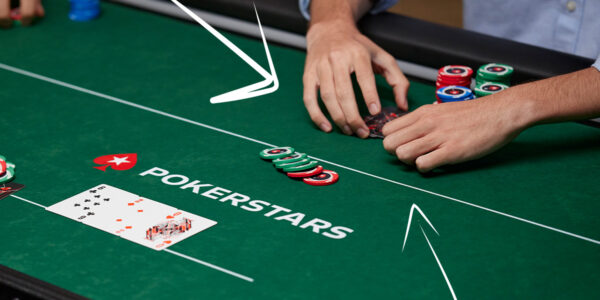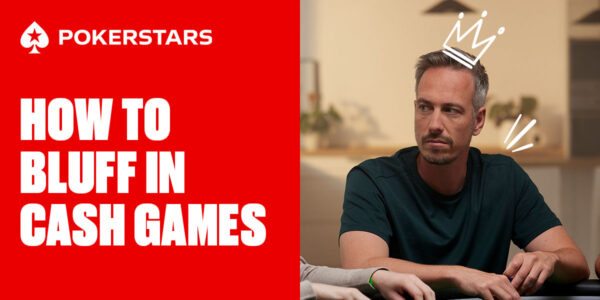Funnelling Ranges
Today we discuss one of the most powerful exploitative concepts in the game. Funnelling someone’s range means making a play that causes them to play too many hands in a certain way, leading to them being unbalanced and exploitable. All of the best professionals use funnelling to beat weaker players. By funnelling you are playing an active
Common Examples of Funnelling
When you check to the maniac who will always bet you are funnelling. Your check causes him to put too many bad hands in his betting range and thus you should check a lot of your good hands and not too many that you have to fold.
When you overbet the turn against a nit on a scare card, you are funnelling too many of his hands into his folding range and so you should make this play only with hands that desire fold equity i.e bluffs.
When you check to the passive nit as the pre-flop raiser who will only bet if he’s hit the flop, you are funnelling too many good hands into his betting range and finding out for free when you should just be folding a very marginal hand. Why bet for information when you can check?


When you bet the river for 33% pot against a calling station, you are funnelling too many of his marginal hands into his calling range. You should make this bet only with a value hand. But against the cautious reg who is scared of being ‘value-owned’ you can make this same little bet only when you have air and end up getting far more folds than you need for the play to be profitable.
Multiple Funnelling
Sometimes it is possible to funnel Villain’s range multiple times in the same hand. By doing this, you can manipulate your opponent’s range to become very face up and very predictable. Take this hand that I played this morning for example:
At 100NL Zoom, an unknown but tight-aggressive looking opponent opens on the BU to $2.50 and I 3-Bet in the SB to $11 with 8♣ 8♠ . The BB folds, and the BU calls.
The flop ($23) comes down 7♠ 6♣ 2♠ and I c-bet for $16.39. This large bet is mainly for protection and gives Villain’s vast amounts of overcards a poor price to float me. After I make this bet and Villain continues, I can confidently check blank turns and fold to most future aggression. I will get called by some worse hands like 55, 44, 98s, 7x, and 6x so there is a component of value to this bet. What this bet does mainly though against the average opponent is that it funnels him too much towards having a pair, set, or draw. In theory, BU is supposed to call my c-bet with some AQ and overs with backdoor draws; but in practice this rarely happens. Sadly, my opponent calls indicating that he has a stronger part of his range, but then something interesting happens.
The turn ($55.78) is the game changing A♥ . Now that my opponent’s range is so full of mediocre hands that are better than mine, an opportunity for more funnelling presents itself. Since most people fail to call enough Ax besides flush draws on the flop, Villain now has a lot of second pair in his range. Even though the ace is not a great card for my range, most people fail to realise how little Ax I will have here when I bet large on the flop. I now make a tiny bet of $12.79 – less than one quarter pot. The object of this bet is to funnel all of Villain’s 99-JJ into his calling range where I can then funnel them into the muck by shoving the river. Meanwhile I will cause sets to mostly raise now and some of his draws might jam on me if they can resist the price to simply call. If Villain calls this bet, he has a lot of bad one pair.
Villain calls my little turn bet as he commonly will.
The river ($81.36) brings the K♠ . This card is a bit of a bummer in the sense that flushes have now got there. That said, many of his flush draws would have contained this very card so it’s far from the worst spade that could have fallen. I shove for $59.82 – a bet designed to fold out almost all of Villain’s 99-JJ combinations. If Villain is playing particularly timidly and wants to believe my range is a lot stronger than it is, he might even make a hero fold from time to time and lay down a hand like A♣ Xc.
Note how all three of my post-flop actions have funnelled Villain into getting to the river with too many medium pocket pairs and then folding them. I am essentially building a big pot to then take it down. Although this was not my plan from the flop, it became an obvious option when the turn fell a scare card for the bulk of his range at the same time as my hand became terribly weak. Nothing to do now but sit back and hope that I dodge flushes and hero calls.
Villain tanks for 50 seconds. I’ve surely ran into a strong part of his range.
And then he finally folds. Most people aren’t tanking this long with TT. As one of my students pointed out when I showed him this hand, it is fairly likely that Villain folded an ace here. This is an unforeseen bonus if people want to be this nitty against me.
Disclaimer
Try not to make up reads about how your bets are funnelling your opponent, if you’re not sure. When you’re first starting out in poker funnelling can be dangerous as it takes experience to figure out when and how to do it. But once you’ve built up good reads on how typical player types react to certain lines, you can use funnelling to devastating effect.














